saturn
Latest

Follow Cassini’s final moments before it plunges into Saturn
For the last thirteen years, Cassini has been orbiting Saturn, sending back extraordinary images and data from the ringed planet and its moons. But now, it's time to say goodbye. Tomorrow, September 15th, the spacecraft will make its final fiery plunge into Saturn's atmosphere.
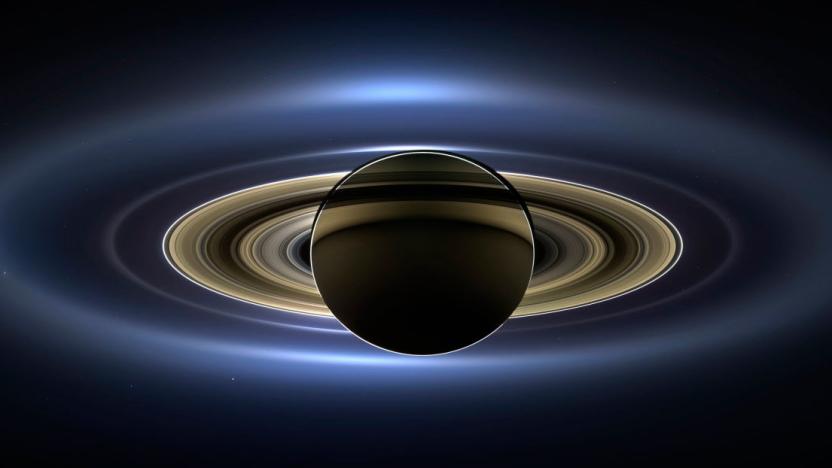
A lawsuit almost stalled NASA's Cassini mission
Capt. Scott Kelly wasn't kidding when he famously quipped that "space is hard." Even getting to the launch pad can prove to be a daunting challenge. Take the Cassini mission to study Saturn, for example. Despite an investment of $3.4 billion and nearly a decade of development, Cassini wound up being very nearly scuttled at the last minute by protesters who thought they knew better than a federal agency that has put multiple men on the moon. Geez guys, it was just 73 pounds of plutonium riding aboard that Saturn orbiter -- it wouldn't have caused that much damage had something gone horribly wrong at launch.

Cassini will take five victory laps before plunging into Saturn
Over the past few months, Cassini took the closest pictures of Saturn's rings we've ever seen that it was pretty easy to forget that the probe was nearing its end. It actually dove in and out of the rings to prepare for its poetic death, and now it's down to its last orbits around the planet. On August 14th, 12:22 AM Eastern, Cassini will begin its final five passes over Saturn, going as close as 1,010 to 1,060 miles above the planet's clouds to observe its auroras and finer features not visible from a higher altitude.
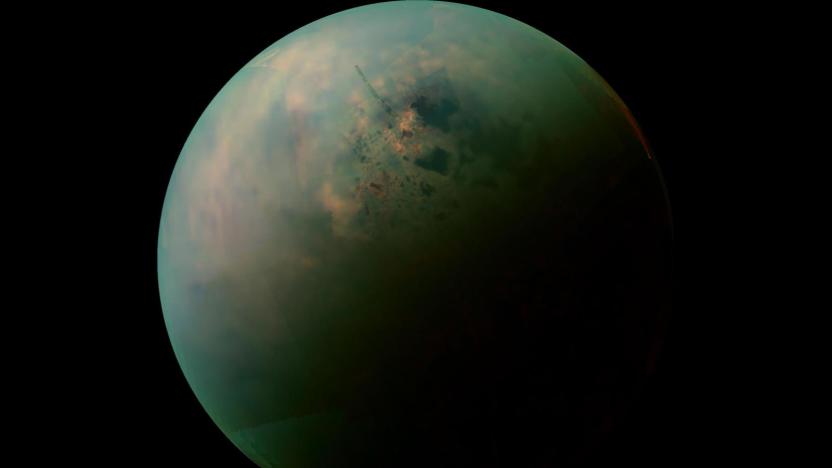
A molecule found on Saturn's moon Titan could foster life
In a new study published today in Science Advances, researchers report that they've found a complex molecule in the atmosphere of Saturn's moon Titan that could lead to the formation of life. Cell membranes are the outer barrier of most cells found on Earth and they, or structures like them, are crucial for life to form. And while Titan is quite different from our planet, it's thought that this molecule -- vinyl cyanide -- is one that could potentially form cell membranes in the Titan environment.
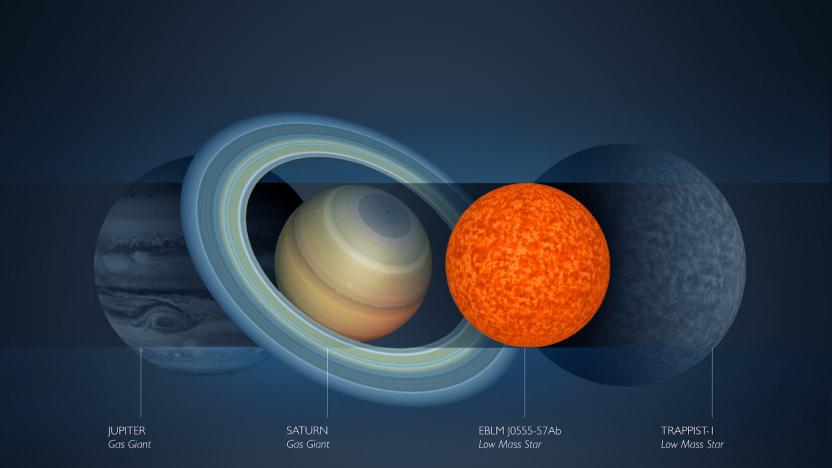
Astronomers spot the smallest star so far
Researchers at the University of Cambridge have found the smallest star ever discovered. It's just slightly bigger than Saturn and while its mass is similar to that of TRAPPIST-1 -- which NASA recently found seven Earth-sized planets rotating around -- its radius is 30 percent smaller.
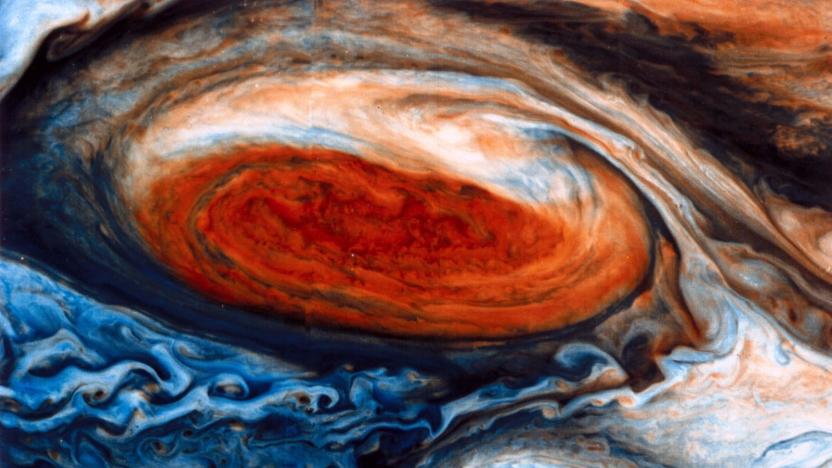
NASA seeks Jupiter's secrets with historic spacecraft flyover
Every planet in our solar system is famous for something. Saturn has its rings, Mars has its soil, Uranus has that unfortunate name, and Jupiter has the Great Red Spot: a titanic storm that has been spinning for more than 350 years. Though we've peered at the distant gas giant's iconic feature since the 1830s, we still know little about its inner workings. That could change on Monday night, when the Juno spacecraft flies directly over the Great Red Spot for the first time in human history.

Saturn's largest moon has enough energy to run a colony
Saturn's biggest moon, Titan, is one of the few viable places humans can explore first-hand beyond Mars. It's relatively safe from radiation, it's covered in liquid (though not water) and otherwise relatively safe. But could more than a handful of people even stay there for very long? Apparently, the answer is yes. Researchers have conducted a study showing that Titan should have enough energy to sustain a colony. The first arrivals might have to build a nuclear power plant and take advantage of radioactive decay, but colonists could use the abundance of hydrocarbon lakes to generate power by combining hydrogen with acetylene (which should also be plentiful). And since Saturn creates strong tides, you could use turbines to generate plenty of electricity.

ICYMI: A prosthetic hand with two senses
Today on In Case You Missed It: We get our first close-up look at Saturn's rings thanks to the Cassini spacecraft -- which just completed the first of its twenty-two passes through the planets' famed hoops. NASA stitched together the images from the craft to give us Earthlings an incredible first-person (first-spacecraft?) point-of-view of the recent dive, which began at the north pole of the planet and moved down its side. The imaging team working on Cassini's trips expects to get even better data from the subsequent trips, which will gather information on Saturn's gravity and magnetic fields.
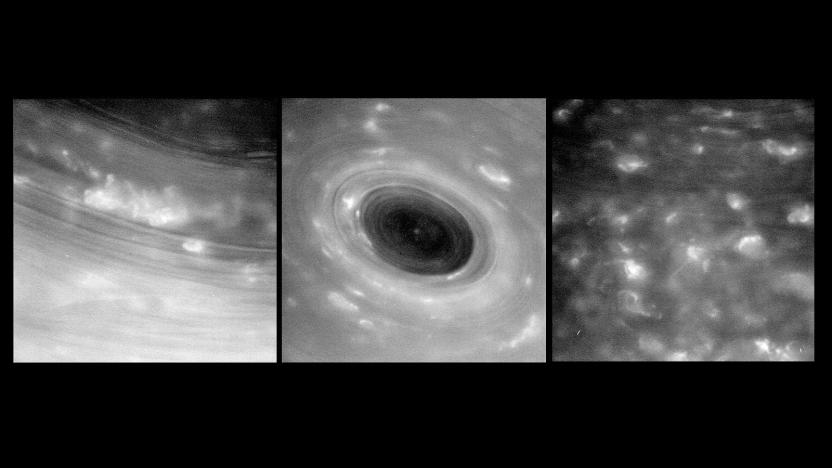
Cassini probe survives first dive between Saturn and its rings
NASA's Cassini probe has emerged unscathed after its first dive between Saturn and its rings. The spacecraft's ground team had to spend 20 hours wondering whether the probe was doing well or whether it plunged to its death a few months too early. Thankfully, it got back in contact with NASA at 2:56AM EDT today, April 27th. By 3:01 AM, it started beaming back precious data about the planet's atmosphere, including the unprocessed images of Saturn's features above.

Saturn and Jupiter's moon burps bode well for distant life
Scientists recently took a closer look at data over a decade old and concluded that two moons orbiting Saturn and Jupiter might have environments that foster life. During an October 2015 flyby of the ringed planet's moon Enceladus, the probe Cassini was hit by gaseous plume, which was likely a hydrothermal vent breaking through the iced surface. Scientists theorize that the spray is evidence of chemical energy for life to feed on. Thanks to sporadic evidence of plumes on Jupiter's moon Europa, NASA has announced that two locations in the solar system might support living organisms.

Watch a NASA simulation of Cassini's upcoming Saturn crash
On April 26th, NASA's Cassini probe will begin diving in and out of the gap between Saturn and its rings in what the agency calls its "Grand Finale." The spacecraft will orbit the gas giant it's been observing since 2004 22 more times before taking the final plunge into its atmosphere in mid-September. Since we won't be able to get a front-row seat to that show, NASA has released a video simulating the probe's last months, which you can watch below the fold. If that's not enough, you also download the "Eyes on Cassini" app for Macs and PCs so you can virtually ride on board the spacecraft and experience its last orbits and final plunge yourself.
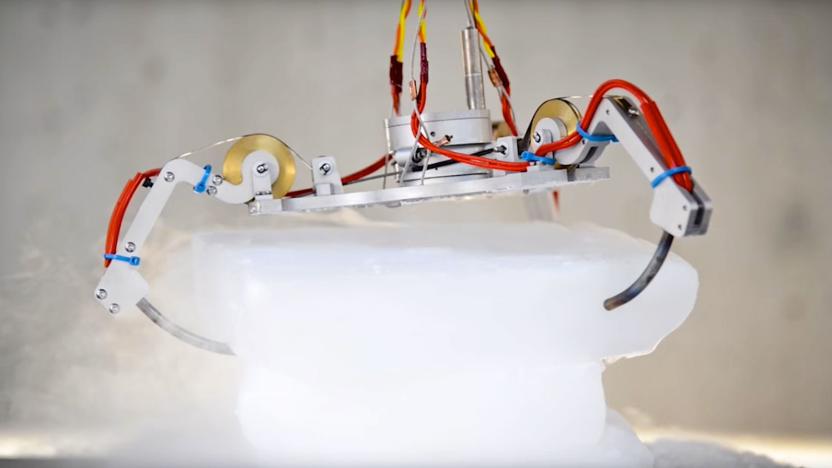
How NASA's future robots will explore frozen worlds
Delivering a rover to the surface of a distant icy world like Jupiter's moons Europa and Titan is only half the challenge. Once on the surface, the robotic explorers will have to contend with intense space radiation, plunging temperatures that drop to hundreds of degrees below zero and miles upon miles of ice before hitting the subsurface oceans that astronomers suggest may contain life. But NASA has a plan.
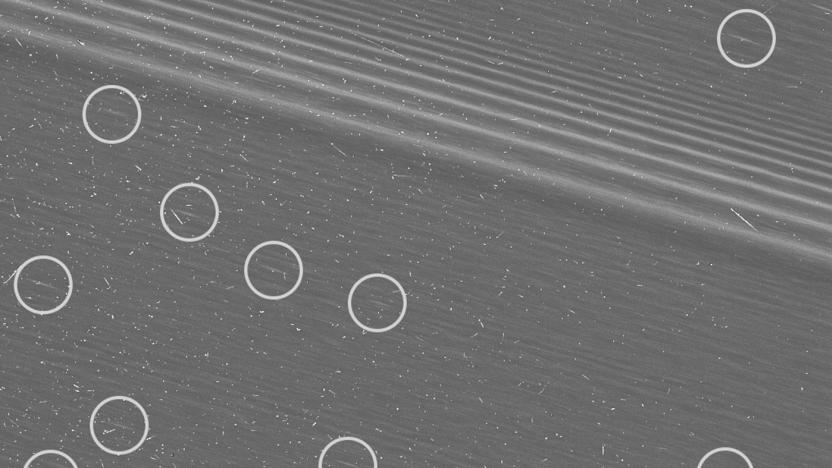
Cassini captures close-up views of Saturn's rings
NASA has released high-resolution close-up images of Saturn's outermost rings captured by Cassini as part of its penultimate mission. The spacecraft has been diving in and out of the rings every week since November, taking images that show features as small as 550 meters or around the same size the world's tallest buildings. That might not sound small from our perspective, but don't forget Cassini is taking photos of another planet. In the image above, the encircled parts show features called "propellers," which are bright disturbances caused by the gravity of moonlets embedded in the ring.
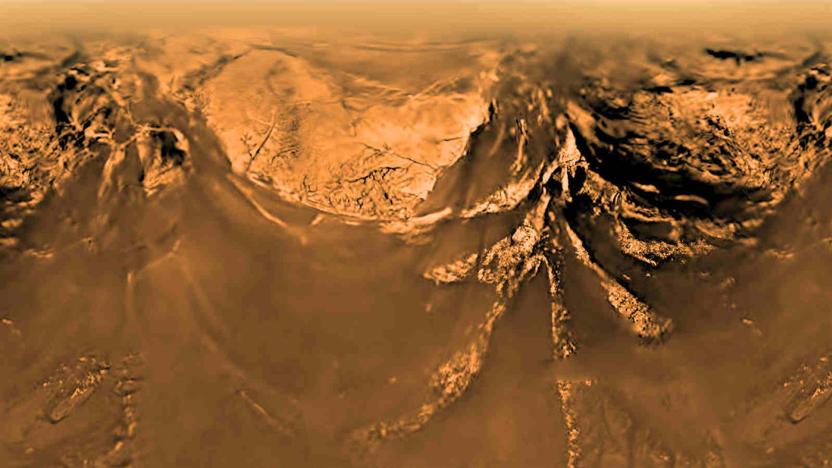
NASA video recreates Huygen probe's historic landing on Titan
Before NASA's Cassini probe captured the most detailed images of Saturn we've ever seen, it dropped its companion Huygens on Saturn's largest moon, Titan. The probe's historic landing took place on June 14th, 2005. Now, the space agency has taken the data and actual photos Huygens sent 12 years ago to recreate part of its two-and-a-half hour descent into Titan's hazy atmosphere. The video, which you can watch below the fold, features what the probe saw from an altitude of around 6 miles, including the moon's rugged highlands and deep ravines.

Cassini captures Titan's mysterious clouds on cam
It's business as usual for the Cassini spacecraft until it's time to say goodbye in September 2017, and some of the latest images it captured tell us more about Saturn's moons. The spacecraft's cameras, for one, produced two very different views of Titan's high northern latitudes. As you can see in the image after the break, one (the black-and-white photo) clearly shows the surface features of Saturn's largest moon. The other shows a moon whose surface is obscured by bright clouds. These were taken within the same period during the spacecraft's Titan flybys on June 7th and July 25th.
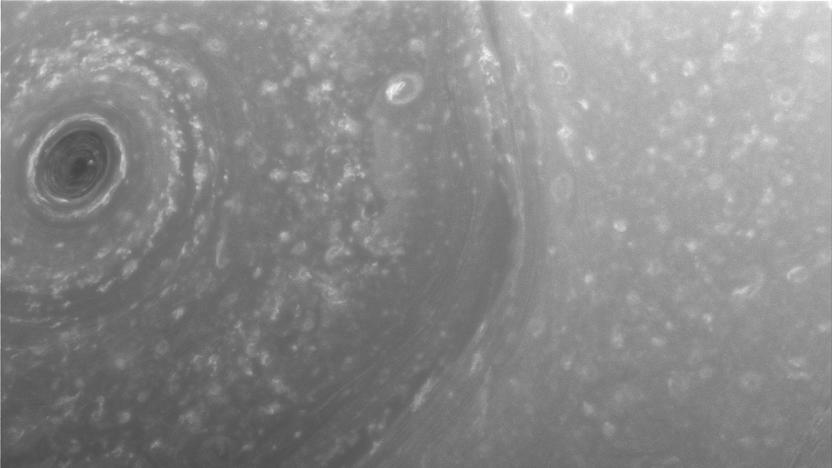
NASA's Cassini spacecraft sent photos of Saturn's north pole
As Cassini winds down its 20-year mission to Saturn, the spacecraft will maneuver into a series of weeklong orbits, allowing it to get a closer look at the planet's famous rings as it flies by. Although there are still a few days before Cassini grazes Saturn's rings, its cameras have already sent back some initial shots of some interesting features near the planet's northern hemisphere.

ICYMI: Pinchers more powerful than dog jaws
try{document.getElementById("aol-cms-player-1").style.display="none";}catch(e){}Today on In Case You Missed It: Scientists looking into the strength of the pinchers in Coconut crabs found that they exert a force of 3,300 Newtons, which is more than the average dog's jaw and far stronger than any other crustacean. Meanwhile, NASA's plan for the Cassini spacecraft involves getting closer and closer to Saturn's rings as it uses the last of its fuel reserves, then making a fiery plunge into its atmosphere in April of next year. If you're feeling brave, feel free to watch the video of the bike going across the top of a dam, although a personal favorite is the salmon launcher. As always, please share any interesting tech or science videos you find by using the #ICYMI hashtag on Twitter for @mskerryd.

It's the beginning of the end for NASA's Cassini spacecraft
Cassini is officially, irrevocably in its final year of existence. The NASA spacecraft has been capturing lovely images and collecting samples of Saturn and its orbiting objects since 2004, but today Cassini enters the final phase of its mission. Between November 30th and April 22nd, Cassini will circle Saturn's poles, diving between its outermost rings once every seven days, a total of 20 times (as shown above). Its final mission is also a first -- Cassini will observe unexplored areas of Saturn's rings, including the collection of small moons orbiting near their outer edges.
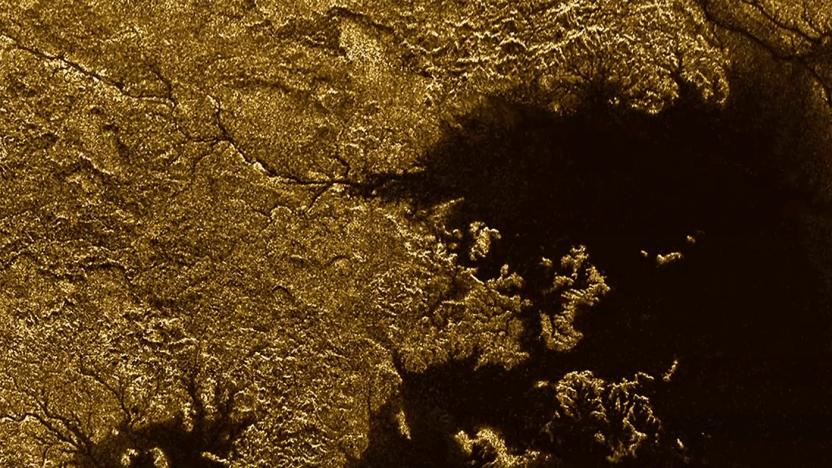
Cassini spacecraft finds flooded canyons on Saturn's moon Titan
It's official: Saturn's largest moon, Titan, has canyons that are flooded with liquid. Well, liquid hydrocarbons, anyway: Scientists analyzed images from a flyby of the Ligeia Mare sea of methane that the spacecraft did in 2013 and found channels branching out from it. Some of these were narrow and deep but it wasn't until further examination that they confirmed the steep troughs were carved out by liquid.

Sega Saturn copy protection gets cracked two decades later
Sega Saturn fans have a problem: while the console has long supported unofficial code on CDs thanks to mod chips, that's no good if you want to use software in any other format. How will you play anything if your decades-old CD drive dies? You can rest easy after today. After years of work, enthusiast Dr. Abrasive has found a way to crack the Saturn's copy protection system and let it run software from a card with USB support. This was no mean feat, as it turns out -- the Saturn has a notoriously difficult-to-read anti-copying system that isolates itself from many cracking methods.








